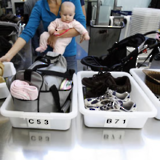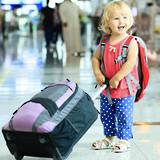Shop
01133
https://www.under5s.co.nz/shop/Hot+Topics+Articles/Activities/Travel/Kids+Car+Seat+Safety+NZ.html
Kids car seat safety
|
Are you sure you’re using the appropriate car seat for your kids? Do you know when to change from a rear-facing seat to a front-facing seat or when it’s ok to use a booster seat? Find out more about kids car seat safety laws in New Zealand.
|
You might also be interested in ...
Getting through airport security with young kids
Going through airport security is usually a fairly mundane procedure, but when you have young kids in tow you may need to do a little more planning! These useful tips will help make getting through airport security a little less stressful next time you fly with small children.
6 Tips on travelling with young kids
It’s always good to get away for a few days, but the thought of travelling with young kids can sometimes be quite daunting! It needn’t be. With some pre-planning, it’ll be an enjoyable break for everyone. Here are some tips to help make your journey and travelling with young kids a little easier.
join usJoin us on social media for all our latest news. |
sign upSign up and receive our latest newsletters. |
|







Do you know when to change from a rear-facing seat to a front-facing seat or when it’s ok to use a booster seat?
Find out more about kids car seat safety laws in New Zealand.
Tips on kids car seat safety in NZ
Every year on average, 20 children in New Zealand are killed whilst passengers in motor vehicles.
Over 260 children, aged 14 or younger, are injured severely enough to be hospitalised.
Under New Zealand law from November 2013, all children under 7 years old must use a child car restraint that is appropriate for their weight and size.
1. Rear-facing infant restraints
2. Forward-facing child restraints
3. Booster seats
4. Child Restraint Technicians
More kids articles to enjoy:
- Car seat expiry
- Does your child's car seat have more germs than your toilet?
- What to do with an expired car seat
Image source: sheheartsit.com